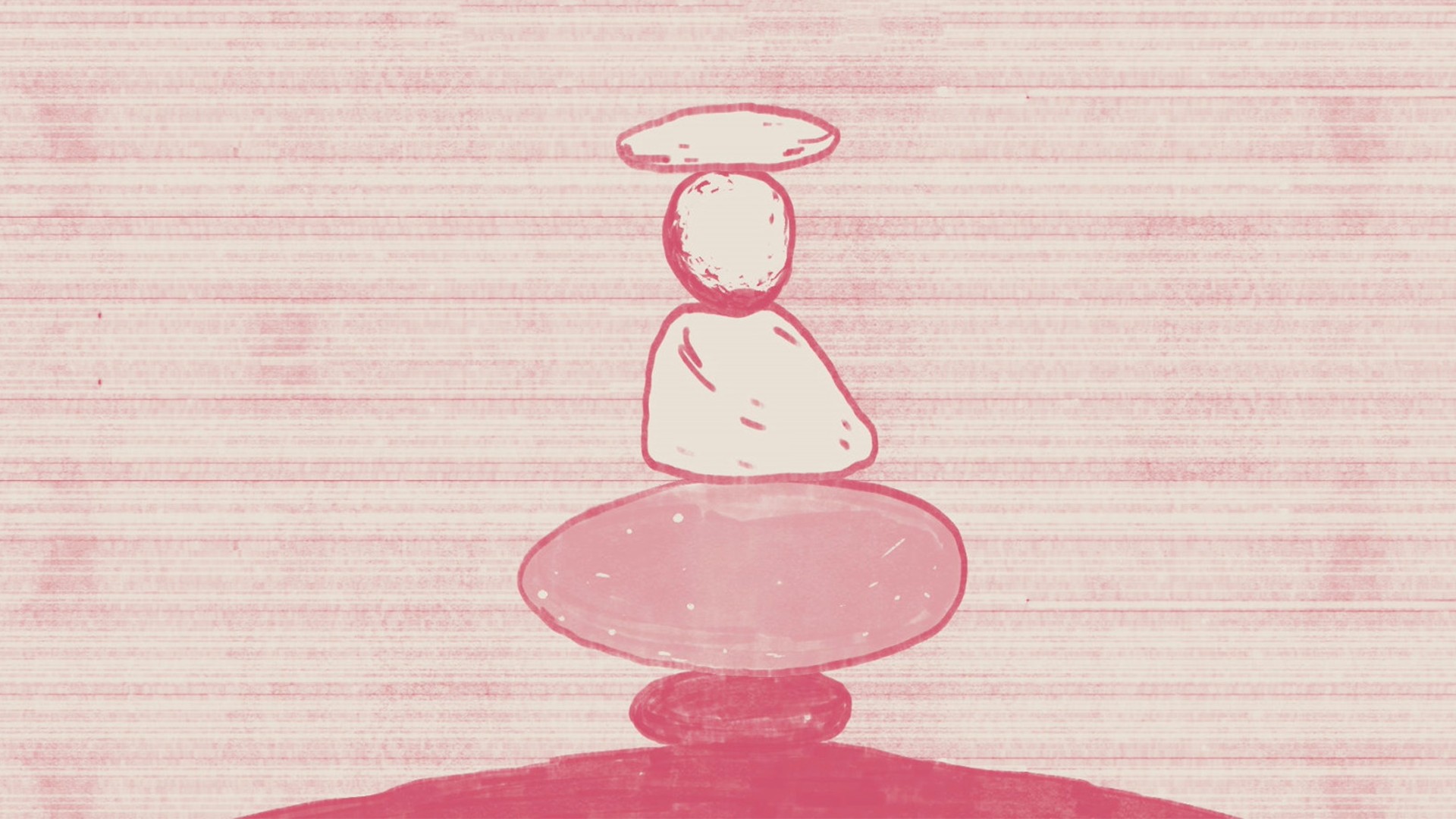Paul Hebert / Getty Images
Last year, I attended a speaking event in which Bad Feminist author Roxanne Gay spoke about her love of the reality television show The Bachelor and it was that moment of candor that made me feel a bit less dirty-little-secret about my own extracurricular choices. After all, I have a bookshelf packed with celebrated voices in literature—from Virginia Wolf to Gabriel García Márquez—and I work daily with people who are doing deeply important work in fields ranging from medicine to advocacy.That means I shouldn’t also kind of love the Real Housewives of New York, right? “I am supposed to be above such flights of fantasy, but I am not,” Gay wrote in a 2014 New York Times op-ed. “I am enamored of fairy tales.”It turns out these segues from the intensely creative to seemingly mindless endeavors aren't uncommon in the creative field. They can even be helpful. Ali O’Reilly, 28, of Minneapolis, Minnesota, works as freelance copywriter and poet and says she has conversations with fellow artists about how to engage in passive downtime without feeling ashamed of it.“It makes you wrestle with yourself a bit because you start to do math,” she says. “[For instance,] ‘Wow I could have read two books in the time that I re-watched all of Black Mirror,’ but shaming myself doesn’t make me write better poetry or make the day job less ever-present.”By losing herself in television for a couple of hours each night, Katherine Morgan, of Portland, Oregon, says she’s become more evocative in her work as a fiction writer. “It allows me to relax and to envision new scenarios that I write about or place my characters in,” she says. “I know it sounds silly, but it makes me feel less alone.”But it’s not at all uncommon, says Michael Alcee, a New York-based clinical psychologist who specializes in helping students tap into their creativity in their academic and personal lives. “It might seem counterintuitive that creative individuals should need moments of escapism in order to keep producing, but when you look closer at the psyche it makes complete sense,” he says. “The psyche—like a field—needs to be planted and harvested for creative possibilities, but it also need to have time to lie fallow.”
More from Tonic:
Alcee, who is also the mental health coordinator at the Manhattan School of Music, says the book The Courage to Create by psychologist Rollo May discusses this practice. In it, May encourages people to alternate hard work with times of relaxation so the unconscious can allow strands of experiences to come together in novel and unexpected ways.“As writer Brenda Ueland puts it, ‘The imagination needs moodling—long, inefficient, happy idling, dawdling, and puttering,’” Alcee says. “This is, after all, how many of the scientific, mathematical, and artistic breakthroughs came to their originators, so why shouldn’t we all try to walk in their footsteps?”Carola Salvi, a scientist at Northwestern University’s Creative Brain Lab, says it is indeed this idea of stepping outside of the box of creative thinking that leads artists toward what she calls epiphanies or “Aha! moments.” Salvi and her colleagues study the two main types of problem solving—analytical and insightful—and work to uncover which is more conducive to discovering creative inspiration.The former involves an analytical process. “It could be compared to being in a labyrinth, where it takes trial-and-error to eventually find the exit,” she says. On the other hand, an insight—or creative epiphany—occurs when it seems as if the solution to a problem appears out of thin air. “We won’t be able to retroactively report the reasoning path that took us there,” Salvi sys. “However, we are very confident in it, even if we don’t know how the solution came to our mind."As previous studies have shown, Salvi says these insights can be tracked back to alpha waves, which travel at a frequency that corresponds with relaxed and reflexive thinking. “Usually, we have alpha waves in our brain when we are just about to fall asleep, when we aren’t focused on a task and our mind is wandering,” Salvi says. “[When] we are really chill.” The idea is that our brain acts in this way to filter out visual noise and distraction and to facilitate creativity, she says.This concept is further outlined in a 2015 study, in which Salvi and her colleagues observed people’s eye movements. The team discovered that before having a creative insight, people tend to blink more, blink for a longer time, and avert their gaze away from the problem at hand. Salvi says this behavior can be easily observed in a person who is lost in thought. “We look outside of the window or at a white wall without having a specific focus of observation,” she says. “The idea is that our cognitive system tends to escape any source of relevant information to better focus on our inner thoughts.”Salvi uses the example of a writer who is focused on a set of conditions in front of her, whether it be the words on a screen or specific characteristics of something she is trying to write. “By fixating on the characteristics of a story, they act as a constraint and the writer doesn’t let other elements or original ideas or information come into her mind,” she says. “In a way, you put yourself into a box and you don’t look outside of it.”It's at this point in the creative process that Salvi says these boundaries can hinder the ability for more creative ideas to enter the mind. “It’s when we are not thinking of it or start doing something else, and we aren’t focused on that box of concepts that we let other information or distractors come into our minds.” This, Salvi says, is when creative epiphanies often strike.But those creative insights are not limited to Netflix binges. Seda Gragossian, the clinical director at the Talk Therapy Psychology Center in San Diego, California, says engaging in an activity that doesn't take much contemplation is an example of mindful escapism where brain waves slow down and extraneous thinking is limited. Knitting, adult coloring books, and meditation are also used to promote this sort of “alpha” thinking, Gragossian says. And, yes, even watching TV and playing video games fall into this lightly relaxed state of mind.“The key, though, is what you do during this state,” she says. “Creativity actually requires action. When we are playing video games or watching TV, we are in a great state for creative pursuits, but we unfortunately don't take advantage of it. Everybody has their own thing that helps them to recreate this state of mind."And Alcee says they can go ahead and do it without guilt: “Creative folks should mix it up as much as they possibly can—other areas of one’s life, especially other artistic forms— become part of the collage process that is creativity itself.”For O’Reilly, whether it’s television binges or researching vintage campers, she says there’s something deeply mindless about "voyeuring" people’s lives which seem opposite to yours. "It keeps the muses fresh, honest, and talking," she says.Read This Next: This Is What LSD Does to a Musician’s Creative Process
Advertisement
Advertisement
More from Tonic:

Alcee, who is also the mental health coordinator at the Manhattan School of Music, says the book The Courage to Create by psychologist Rollo May discusses this practice. In it, May encourages people to alternate hard work with times of relaxation so the unconscious can allow strands of experiences to come together in novel and unexpected ways.“As writer Brenda Ueland puts it, ‘The imagination needs moodling—long, inefficient, happy idling, dawdling, and puttering,’” Alcee says. “This is, after all, how many of the scientific, mathematical, and artistic breakthroughs came to their originators, so why shouldn’t we all try to walk in their footsteps?”Carola Salvi, a scientist at Northwestern University’s Creative Brain Lab, says it is indeed this idea of stepping outside of the box of creative thinking that leads artists toward what she calls epiphanies or “Aha! moments.” Salvi and her colleagues study the two main types of problem solving—analytical and insightful—and work to uncover which is more conducive to discovering creative inspiration.The former involves an analytical process. “It could be compared to being in a labyrinth, where it takes trial-and-error to eventually find the exit,” she says. On the other hand, an insight—or creative epiphany—occurs when it seems as if the solution to a problem appears out of thin air. “We won’t be able to retroactively report the reasoning path that took us there,” Salvi sys. “However, we are very confident in it, even if we don’t know how the solution came to our mind."
Advertisement
Advertisement
